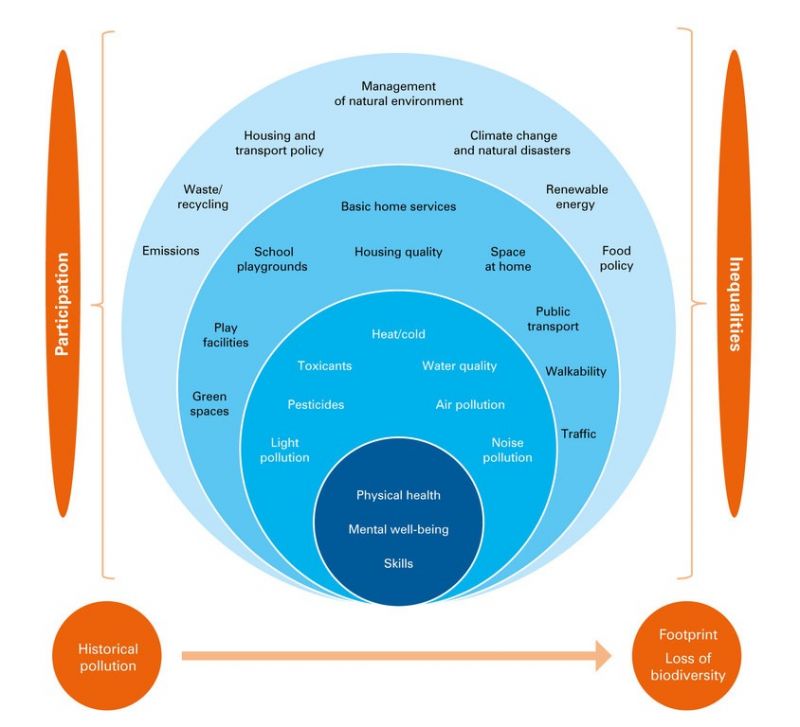- HC stays IDRA move to suspend Sonali Life Board Directors |
- Man dies from heat stroke in Dhaka’s Gulistan |
- UNRWA Situation Report no. 103 on the Gaza Strip & West Bank |
- UNRWA Situation Report no. 103 on the Gaza Strip & West Bank |
- US Human Rights Report 2023: Significant HR issues persist |
Richest countries damaging child health worldwide: Unicef

Historical pollution and loss of biodiversit.
Dhaka, May 26 – Over-consumption in the richest countries is creating unhealthy, dangerous, and toxic conditions for children globally, according to a recent report by the UN Children's Fund (Unicef).
"Not only are the majority of rich countries failing to provide healthy environments for children within their borders, but they are also contributing to the destruction of children's environments in other parts of the world," said Gunilla Olsson, director of the Unicef Office of Research – Innocenti.
The latest Innocenti Report Card 17: Places and Spaces, published Tuesday, compares how 39 countries in the Organization for Economic Co-operation and Development (OECD) and European Union (EU) impact children's environments.
Indicators include exposure to harmful pollutants, such as toxic air, pesticides, damp and lead; access to light, green spaces and safe roads; and countries' contributions to the climate crisis, resource consumption, and e-waste dumping.
The report states that if the entire world consumed resources at the rate of the OECD and the EU countries, the equivalent of 3.3 earths would be needed to keep up with consumption levels.
If it were at the rate at which people in Canada, Luxembourg and the US do, at least five earths would be needed.
While Spain, Ireland and Portugal feature at the overall top of the list, all the OECD and the EU countries are failing to provide healthy environments for all children across all indicators.
Based on CO2 emissions, e-waste and overall resource consumption per capita, Australia, Belgium, Canada and the US are among other wealthy countries that rank low on creating a healthy environment for children within and beyond their borders.
Meanwhile, Finland, Iceland and Norway are among those that provide healthier environments for their country's children but disproportionately contribute to destroying the global environment.
"In some cases, we are seeing countries providing relatively healthy environments for children at home while being among the top contributors to pollutants that are destroying children's environments abroad," said Gunilla.
In contrast, the least wealthy OECD and EU countries in Latin America and Europe have a much lower impact on the wider world.
Over 20 million children in this group have elevated levels of lead – one of the most dangerous environmental toxic substances – in their blood.
Many children are breathing toxic air both in and outside of their homes.
More than one in 12 children in Belgium, the Czech Republic, Israel and Poland are exposed to high pesticide pollution, which has been linked with cancer – including childhood leukaemia – and can harm vital body systems.
"Mounting waste, harmful pollutants and exhausted natural resources are taking a toll on our children’s physical and mental health and threatening our planet’s sustainability," said Gunilla. - UNB

